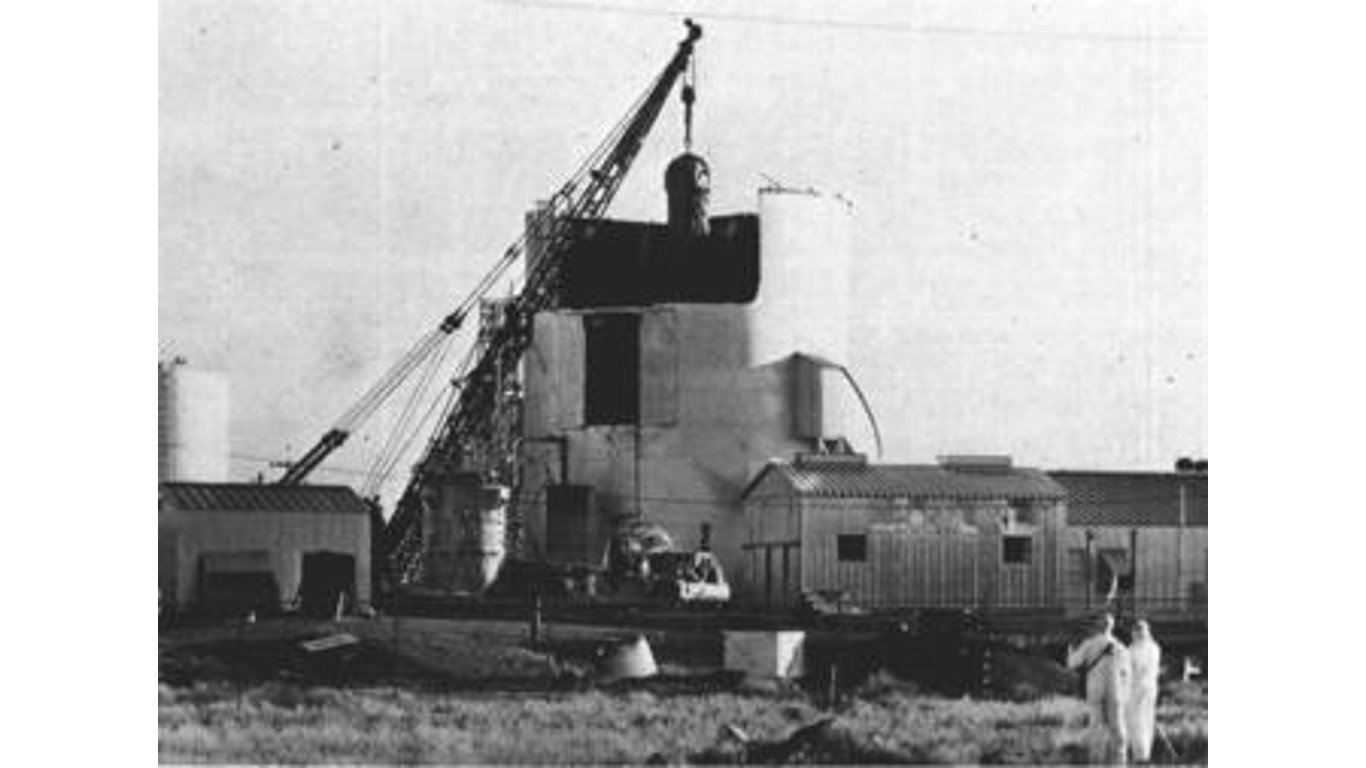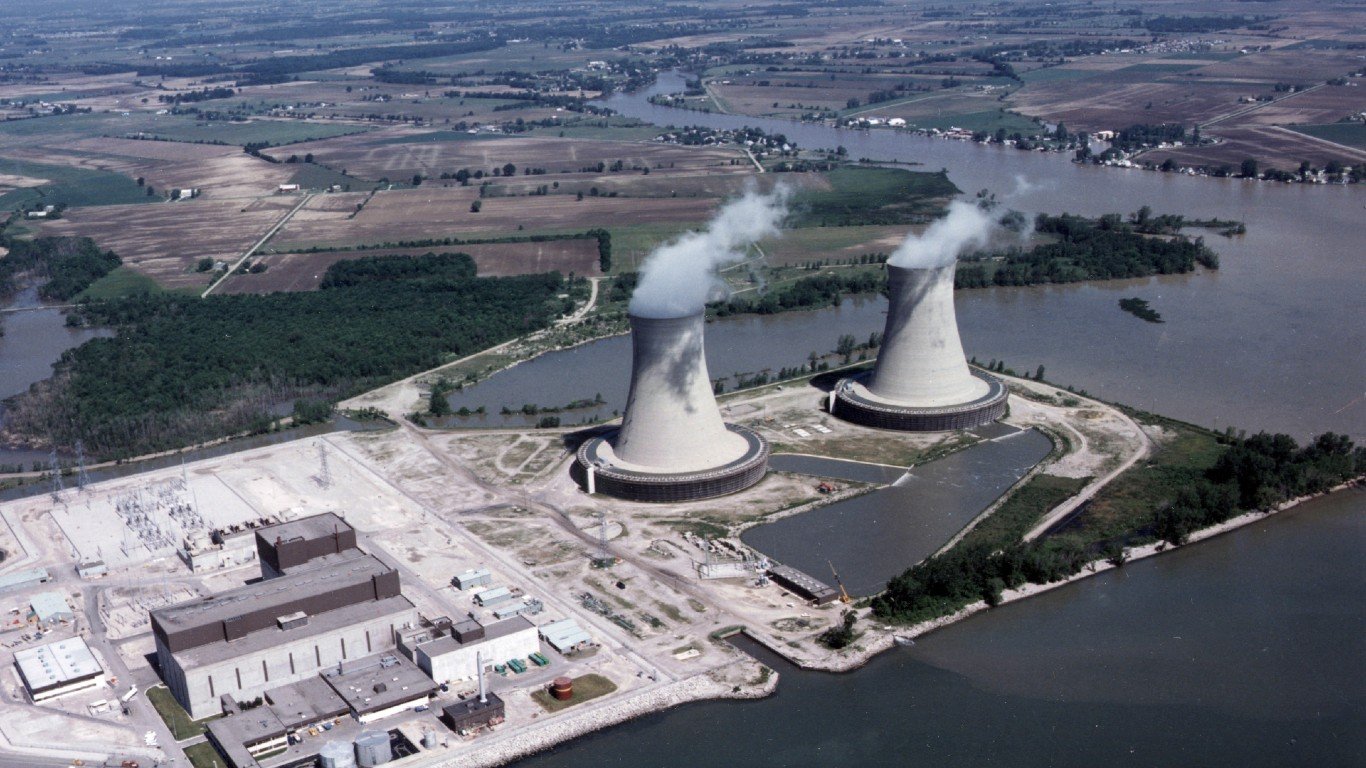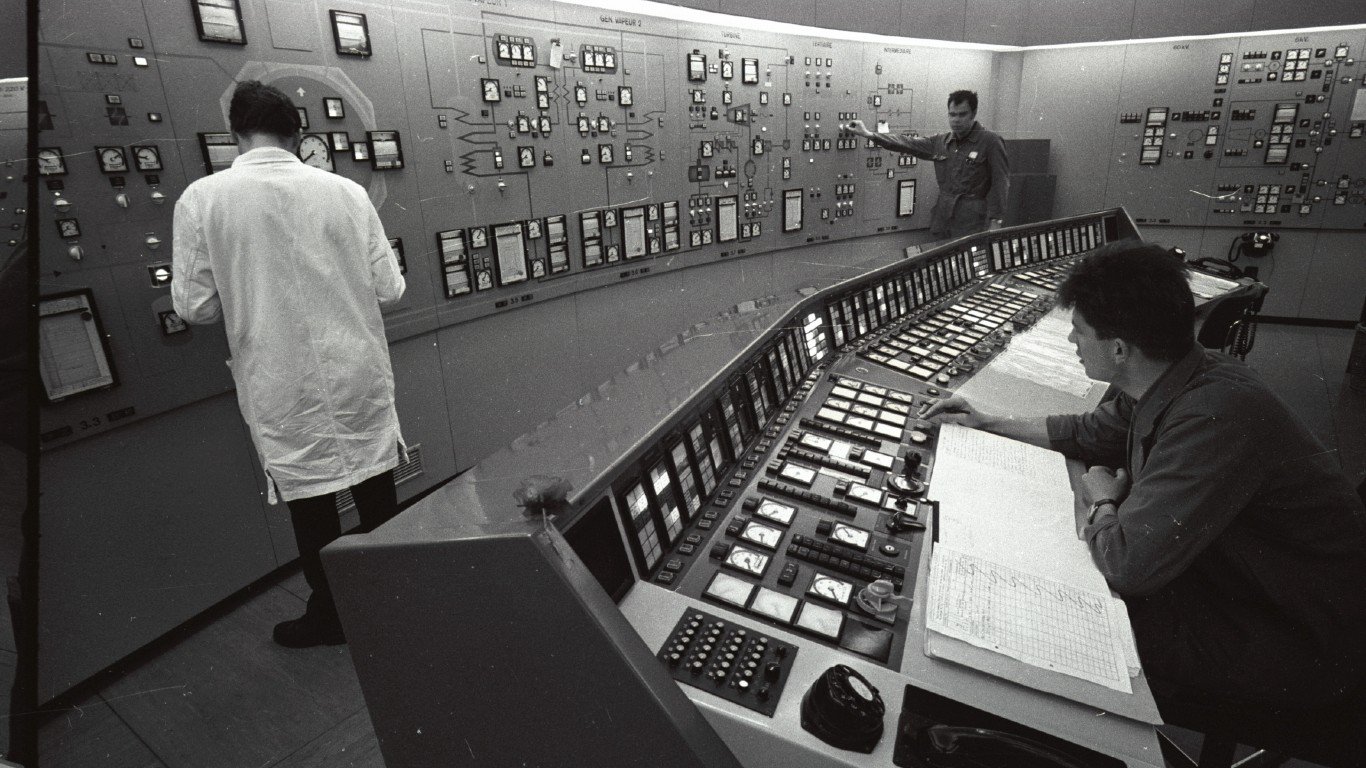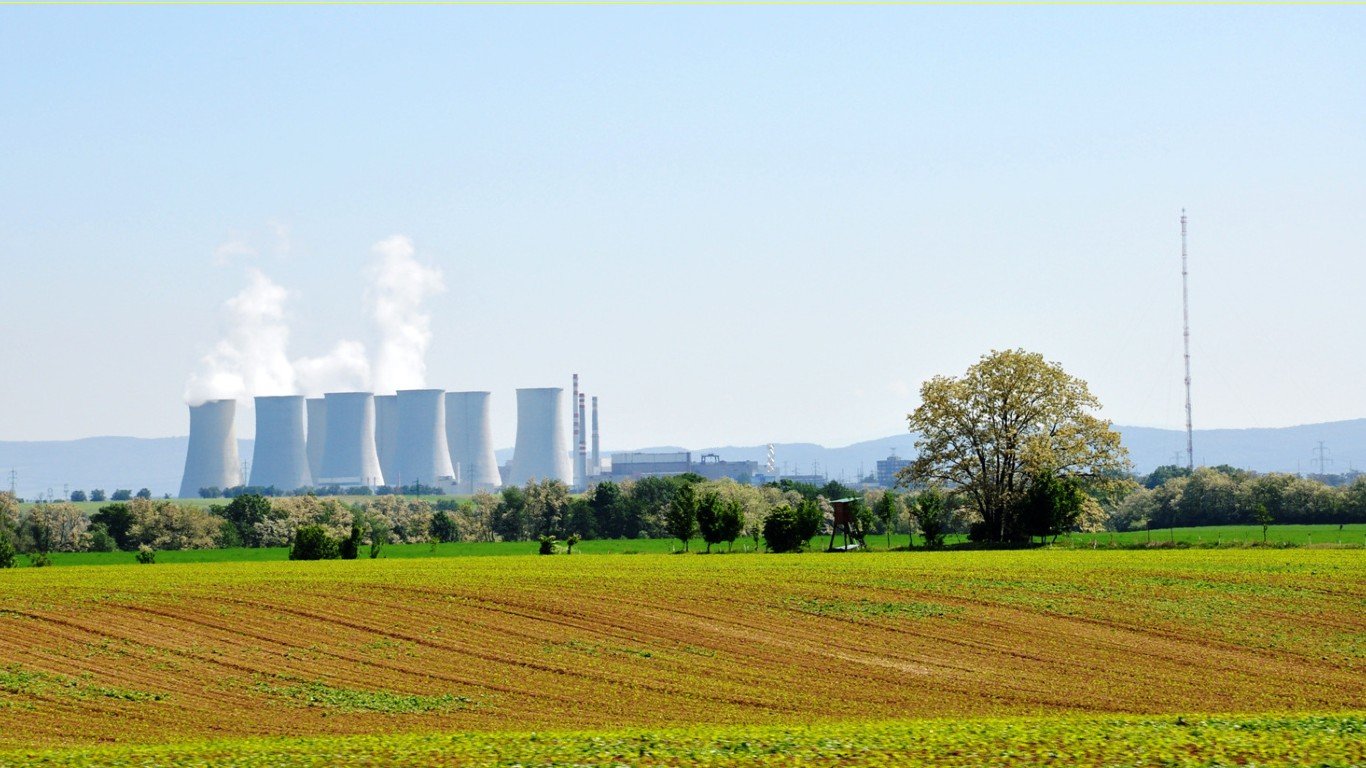
SL-1
> Location: National Reactor Testing Station, Idaho Falls, Idaho, USA
> Date: 3 Jan. 1961
> INES level: Level 4
On Jan. 3. 1961, an accident occurred at the SL-1 boiling water reactor at the National Reactor Testing Station in Idaho Falls. The incident involved the withdrawal of one control rod that was lifted well beyond the required 4-inch limit and caused a massive power surge and steam explosion. All three workers on duty received lethal doses of radiation and died. This is the only fatal nuclear reactor accident in U.S. history, and it led to a change in the design of nuclear reactors.

Westinghouse TR-2 at Waltz Mills
> Location: Westmoreland County, Pennsylvania, USA
> Date: 3 April 1960
> INES level: Level 4
Before the Three Mile Island incident, another nuclear accident occurred in Westmoreland County. The reactor tank of Westinghouse TR-2 at Waltz Mills, part of the first privately-owned test reactor to operate in the U.S., went online in July 1959. Nine months after it opened, a partial meltdown of a uranium-filled fuel rod in the reactor’s core caused radioactive krypton and xenon gases to escape into the air. Atmospheric radiation was more than 130 times the federal human exposure limit. The reactor was shuttered for eight months after the accident and closed for good in 1962. No illnesses have been linked to radiation exposure from the accident.

Enrico Fermi Nuclear Generation Station
> Location: Frenchtown Charter Township, Michigan, USA
> Date: 5 Oct. 1966
> INES level: Level 4
Coolant flow blockage in two fuel channels led to the partial meltdown of two fuel assemblies at the Enrico Fermi Nuclear Generation Station Unit 1, a facility in Frenchtown Charter Township in Michigan. Temperatures at several fuel rod subassemblies climbed to 700 degrees Fahrenheit, causing them to melt. The reactor was closed for repairs and only returned to partial operation in 1972. It was decommissioned in 1975. The facility was named after Italian-American physicist Enrico Fermi, who is considered to be the father of the nuclear reactor.
Lucens
> Location: Lucens, Vaud, Switzerland
> Date: 21 Jan. 1969
> INES level: Level 4
Switzerland intended to be one of the leaders in nuclear energy and opened a plant underground in Lucens in the western part of the country in 1962. But on Jan. 21, 1969, a burst pressure tube created a power surge leading to the reactor malfunctioning and an explosion. Though the plant’s underground design largely prevented people and the environment from being harmed, some radioactivity spread. The Swiss Association for Atomic Energy found there had been no major negligence on the part of the plant’s managers, and the cause was corrosion in a pressure tube, brought about by humidity.
KS 150
> Location: At the time: Jaslovské Bohunice, Czechoslovakia
> Date: Several accidents
> INES level: Most severe Level 4
The Bohunice nuclear power plant was the first nuclear facility built in Czechoslovakia. The reactor, which was constructed off an experimental design, experienced many accidents and was shut down at least 30 times. The worst known accident in terms of fatalities occurred in 1976, when two workers died. An incident occurred a year later when a worker removed control rods incorrectly during a routine fuel change. This caused a serious radioactive leak that caused an unknown number of casualties. The incident was covered up by the Soviet Union. The plant was decommissioned in 1979.








